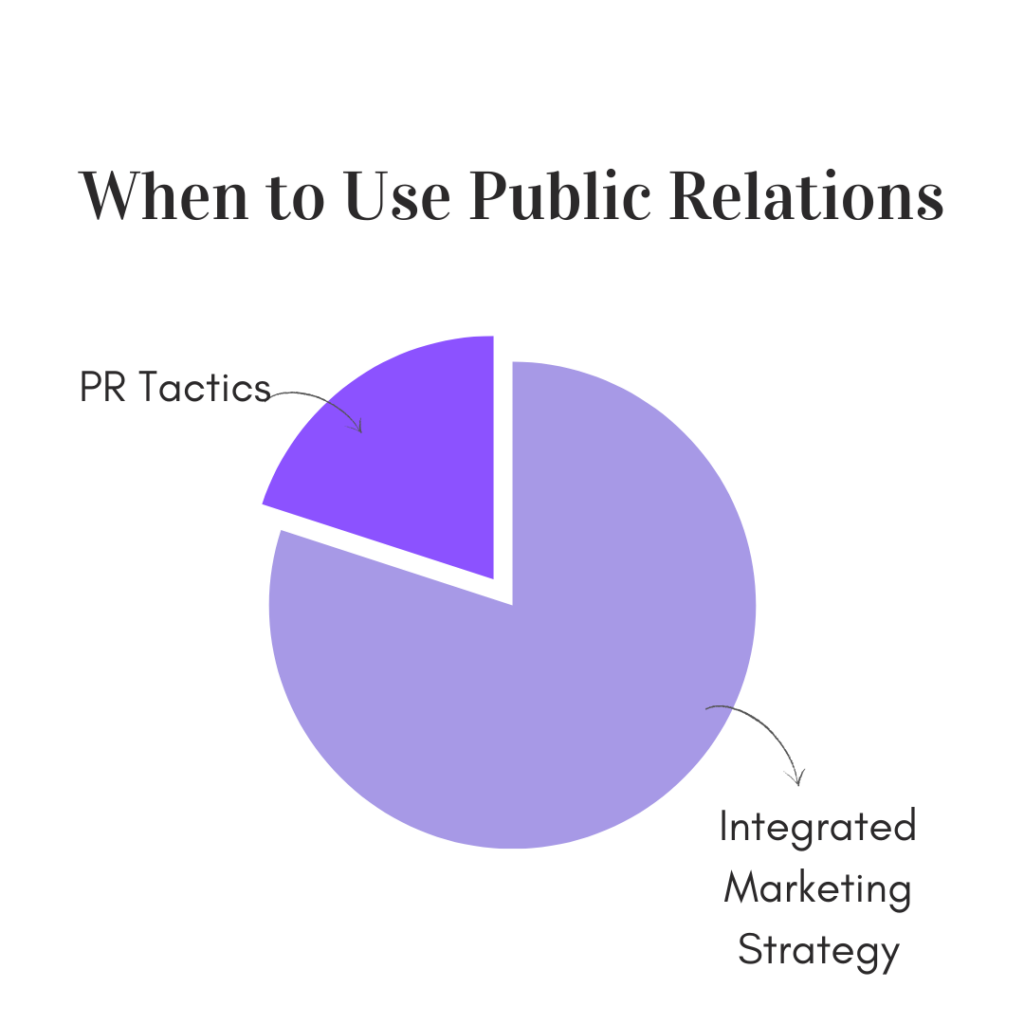When (and when not!) to Deploy a PR Strategy
by Polly Hersey


Public Relations is a powerful tool for any brand, organization or individual. As PR experts, our job is not only to know how to use various tactics, but when to use them. Using PR effectively involves understanding its role both as a standalone strategy and as part of an integrated marketing campaign.
Here’s our guide on when to use PR, how it stands alone, and its complementarity in broader marketing efforts:
When to Use Standalone Tactics:
- Launching New Products or Services: PR is effective for generating buzz and excitement around new offerings. Press releases, media pitches, and interviews can reach a wide audience and create initial interest.
- Building Thought Leadership: Through expert opinions, guest articles, and speaking engagements, PR helps establish individuals or brands as authorities in their field. This enhances credibility and trust among target audiences.
- Promoting Events: Whether it’s a product launch event, a new initiative, or a trade show, PR helps attract attendees and media coverage, amplifying the event’s impact.
A PR strategy should be deployed when the time is right and when storytelling is optimal. If the below ring true, this is a sign to hit pause and re-strategize before deploying PR:
- Misaligned Goals: If PR objectives don’t align with overall marketing or business goals, efforts may be wasted.
- Lack of Newsworthy Content: Without compelling stories or news angles, PR efforts may struggle to gain media attention.
- Short-Term Gains Only: PR is typically a long-term strategy. If immediate results are needed, consider other tactics such as advertising.
In addition to standalone tactics, PR has an important place in larger marketing strategies, and can effectively complement content and social media efforts.
Value of PR in an Integrated Marketing Campaign:
- Alignment with Brand Messaging: PR ensures consistency in messaging across all marketing channels, reinforcing key brand values and narratives.
- Enhancing Content Marketing: PR provides content ideas and assets (like media mentions or interviews) that can be repurposed for content marketing efforts, enriching content with third-party validation.
- Boosting Social Media Impact: PR-generated content can be shared across social media platforms, amplifying reach and engagement among followers.
- Integrated Campaign Measurement: PR metrics (like media impressions, sentiment analysis, and share of voice) add to traditional marketing metrics, offering a holistic view of campaign performance.
Understanding when to leverage PR, both as a standalone strategy and as part of an integrated marketing campaign, is crucial for maximizing its impact. By aligning PR activities with broader marketing goals and consistently evaluating its effectiveness, brands can effectively manage their visibility across various channels.